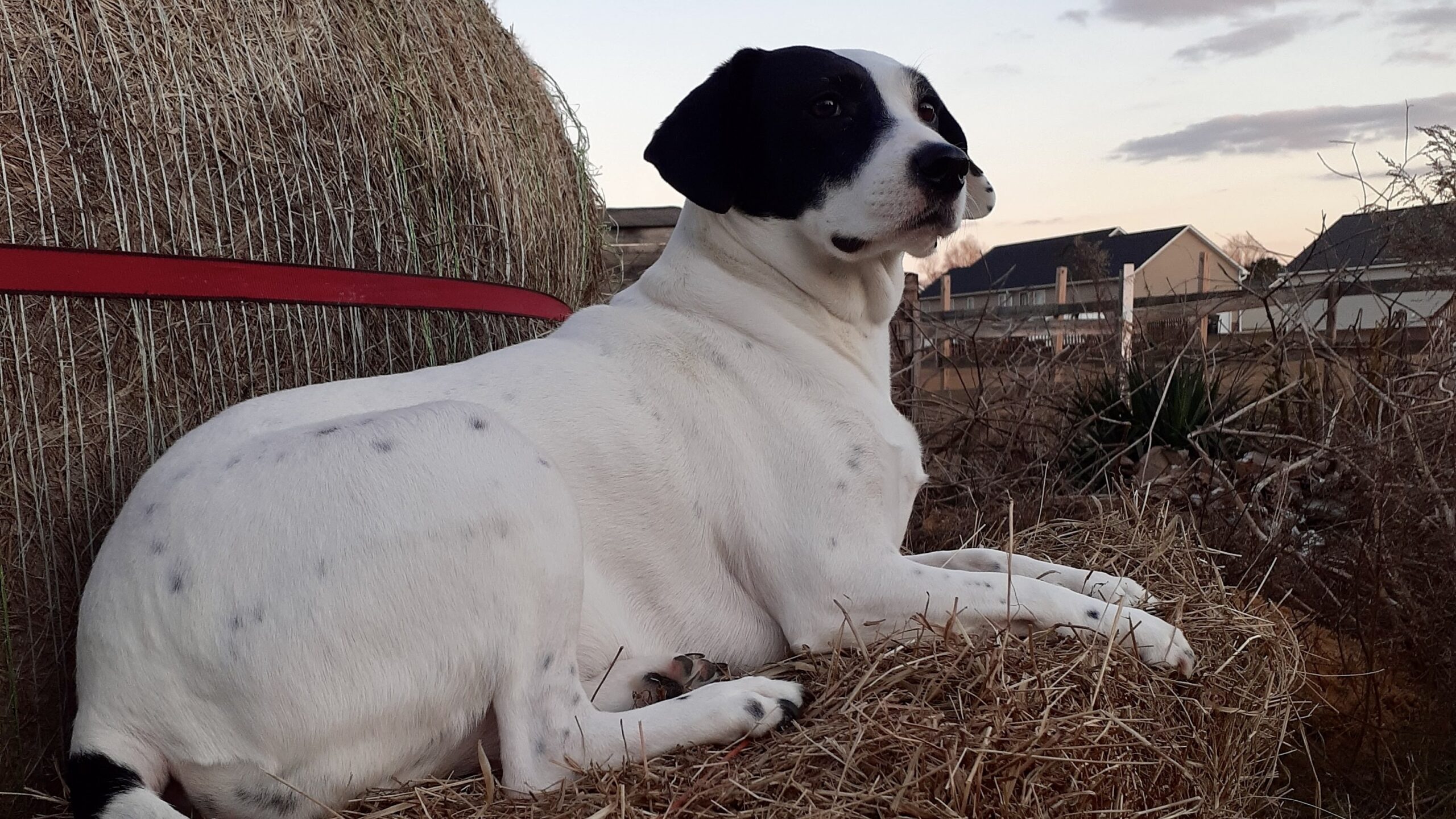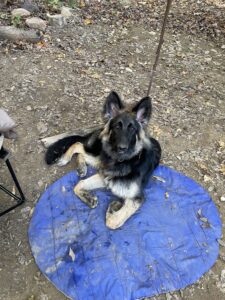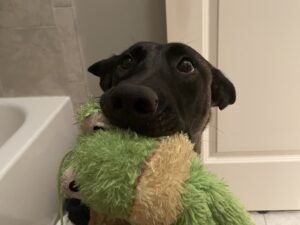Dogs thrive with routine, and for some dogs nothing disrupts their normal routine like an unannounced visitor at the door. Of course, the visitor may not actually be unannounced – we may know hours, days, weeks, or even months in advance that they’re coming. How are our dogs supposed to know that everything’s fine?
We can communicate that everything is safe, calm, and comfortable by creating a predictable visitor routine for them. This helps them understand when a visitor is expected and when there’s no need for alarm. It also helps them understand that we won’t put them into situations where they need to feel nervous, and that we will keep them safe.
A good visitor routine does two things:
- Prevents your dog and visitor from interacting with each other until everyone is ready.
- Lets your dog choose if and how they want to interact with the visitor at their own pace.
Start with your dog in their safe space. A good safe space is another room that is separate from the entryway and any rooms you may take the visitor. Make sure your dog enjoys staying in this room and doesn’t mind hanging out in there alone. Practice having your dog stay in their safe space and make it a fun experience – maybe leave them with a stuffed food toy like a Kong or Toppl filled with peanut butter. From their safe space, your dog should be able to hear, but not see, any visitors.
Direct your visitor to sit in their designated spot. Choose a spot that gives your dog plenty of room to maneuver and leave the situation if they choose to. Remove any obstacles that your dog may get “stuck” on when trying to move away from the visitor, and make sure there is a clear exit pathway for them. Remember not to let your visitor give your dogs treats – this can make dogs even more suspicious of new people. (Just think – if you were afraid of clowns, how would you feel about random clowns appearing and offering you $20? Talk about suspicious behavior!!)
When your dog is ready to come out and see the visitor, use support to help everyone make good choices. Even though we are focusing on our dog’s behavior, don’t forget that humans can make mistakes too! Well-meaning visitors may try to comfort your dog by reaching out to pet them or let them sniff – prevent this with management. Most dogs don’t like being reached for, as it can be highly confrontational and direct. Use physical barriers to protect your dog’s space.
Use your rhythm games and other training skills like station training to help your dog stay successful throughout the visit. Move at your dog’s pace, and help them out when they need extra support to make good choices.
Don’t overstay your welcome. Let your dog choose when the interaction ends, and encourage them to leave the situation when they’ve had enough. Once your dog is done visiting, bring them back to their safe space and let them decompress.



